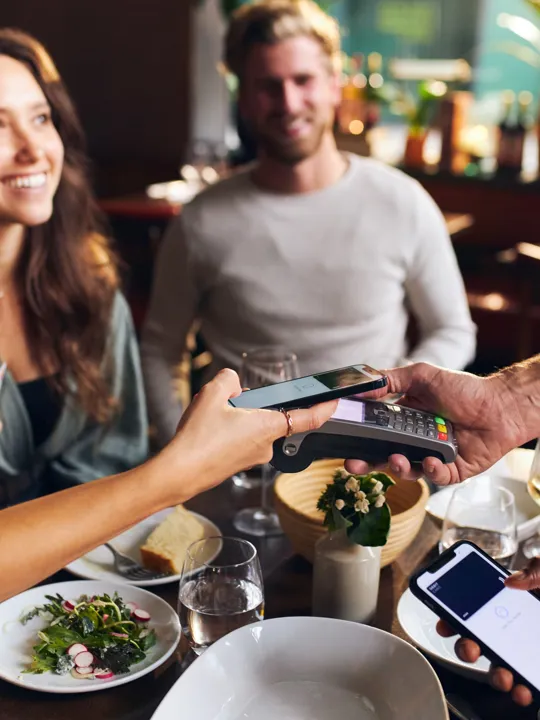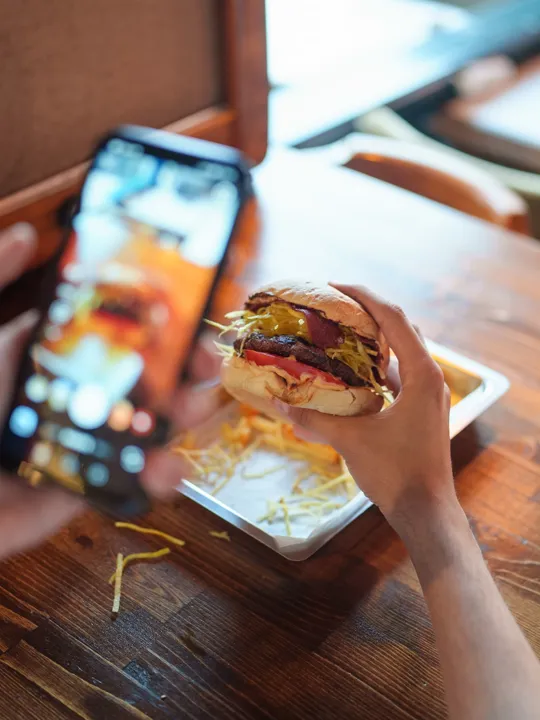Sevenrooms’ 2024 Restaurant Trends Report: What We Learnt
SevenRooms’ 2024 Restaurant Trends Report is live and absolutely bursting full of useful information for diners, restaurateurs and marketers like us. We’re always hungry for new information on consumer habits and below we’re going to summarise some of the key findings from the report on UK data.
Gen Z Diners are Leading the Charge
When looking at which age group dines out the most, younger generations in the UK are dining out the most often, making restaurant visits a part of their weekly routine. Of all the generations, Gen Z dines out the most, with more than half (53%) saying they dine out at least 3 times per month, and 15% dining out 5 or more times. Comparatively, only 9% of Millennials dine out more than 5 times a month, and only 8% of Baby Boomers and Gen X.
This tells us that the restaurant dining experience is a key area of socialisation for Gen Z diners. Whether it’s a group dinner, a weekday date or an excuse to enjoy a usual favourite restaurant, Gen Z is doing it the most.
When looking at some of the major cities, those who eat out the most (5 or more times a week) include London (13%), Cardiff (12%), Manchester (11%) and Bristol (11%). However, the top spot for consumers eating out between 3-4 times a week is Nottingham with 39%, followed by Sheffield at 38%.
We recommend: If trying to appeal to Gen Z diners, consider creating and promoting more events and dining experiences throughout the week. Such as deals, board game nights, quiz nights, etc.
Consumers Are Happy to Spend up to £50 Per Person
Most Brits say they’re willing to spend up to £50 per person for a meal out, with London diners in London spending a little bit more on average. Additionally, consumers in cities with higher costs of living (like London and Manchester) are willing to dish out more for elevated dining experiences. When considering dining upgrades, consumers are willing to pay above market price depending on where they live.
London consumers will spend 38% more on high end items such as caviar.
Manchester consumers are willing to spend 60% more if they receive a drink upon arrival.
In Nottingham, consumers are willing to spend 62% on high end items like caviar.
Consumers in Bristol are willing to spend 22% more on dishes featuring heritage or heirloom ingredients.
Birmingham consumers are willing to spend 33% more on high end items like caviar.
We recommend: If your business is in a city with a high cost of living, consider curating special experiences for guests who are willing to spend a little more. I.e new menu tasting evenings.

Monday is the New Sunday
Surprisingly, the weekend now extends to Monday with restaurants reporting that it is one of the most popular days for reservations. Other data suggests that Monday is also one of the most popular days for hybrid workers to travel to the office, which could also mean more people are using the time to head out for a rewarding dinner.
Reservation Behaviours
When looking at reservation behaviours, consumers are all or nothing, booking either far in advance to secure a table or spontaneously booking on the day. Over half (57%) of SevenRooms reservations in the UK are made on the same day, while the second most common time to book is 10 or more days in advance (17%).
When choosing where to dine, consumers are committed to dining with their first choice. When failing to make a reservation:
- 35% of consumers look for a different date and time at the same restaurant.
- 29% look for availability at other restaurants within the same hospitality group.
- 25% look at different sites for reservation availability at the same restaurant.
- 4% set an alert for reservations to open up.
This tells us that consumers are incredibly loyal regarding where they like to eat, choosing to stick to their guns with where they want to eat, rather than just eating out in general.
We recommend: Implement systems that cater to both spontaneous and planned diners, such as last minute reservation availability and alerts for open tables that may have just been cancelled.
Promotion, Promotion, Promotion
Everyone loves a little promo from their favourite restaurant, but how we like to be granted this promo depends on our generation it seems. Most diners like hearing about restaurant promotions and offers via email. However, data shows us that Gen Z and Millennials are also fans of text message offers. 21% of Gen Z and 22% of Millennials stated that text messaging was the preferred restaurant communication channel.
Furthermore, when segmented by gender, 42% of women are more likely to be influenced by restaurants offering personalised surprises for birthdays and anniversaries. Comparatively, 45% of men are more likely to be influenced by restaurants knowing and honouring their dining preferences, such as sending offers for 2 for 1 burgers if they regularly order burgers, or 10% off a favourite dish.
What Influences Your Audience
Did you know that the average repeat visit rate of restaurants is 23%? This means you’ve got plenty of opportunities to drive repeat visits. Luckily, SevenRooms has some data on the influential factors that different generations consider for returning to restaurants.
- 21% of Gen Z consider the rapport they develop with the front of house team like servers or bartenders.
- 59% of Millennials care about the atmosphere and ambience.
- 27% of Gen X are influenced by the ease of making a reservation.
- 25% of Baby Boomers are influenced by the ease of making a reservation.
We recommend: Implementing a multi-channel promotion strategy that includes emails for older demographics and SMS marketing for Gen Z and Millennials.
Social Media Influences
In 2024, the top social media goals for operators are driving bookings or online orders (52%) and increasing brand awareness (39%). We all know that social media is a powerful brand ambassador for your business and having a varied arsenal at your disposal is always the best strategy. However, when looking at the data, the most influential content that drives bookings on social media are organic posts and paid ads equally at 28% and influencer paid posts and UGC at 42%. This tells us that using all of the above is your best strategy for driving bookings.
Furthermore, the report also shows that almost half of UK consumers (46%) try restaurants because of social media.
- 35% of Gen Z are influenced by posts from restaurants they follow that highlight their personality.
- 38% of Millennials are influenced by posts from restaurants they follow that showcase food and beverage options.
- 17% of Gen X & Baby Boomers are influenced by posts from restaurants they follow that showcase food and beverage options.
We recommend: Use your social media to not only show off food but also who you are and the distinct personality of your business. A great grid is one that users can glance at and immediately see the unique personality of your brand. Couple this with some clever, engaging copy and some influencer and UGC posts and you’ve got a winning grid that appeals to a variety of audiences and drives direct bookings.

How to Get ‘Em and Keep ‘Em
Getting someone in the door is one thing, but getting them back a second, third or fourth time is far more valuable. Of course, great service and great dishes can do so much, but what about loyalty rewards for your repeat customers? Well, data shows us what different generations want from their loyalty schemes:
59% of Gen Z care most about loyalty programs offering free menu items.
19% of Millennials want early access to reservations from loyalty programs.
26% of Gen Xers care most about exclusive events and experiences.
We recommend: Use your analytics to decipher who your strongest market is and curate a loyalty program that appeals to them and what they want from your business.
Email Marketing: Who’s Your Target?
The email open rate industry average for restaurants is around 18.5%, but ideally, you should be achieving higher than this. Our recent excursion to the Iterable Activate Tour and SevenRooms both agree that segmenting email audiences is the key to email marketing success. After all, knowing your audience and delivering what they want is certainly the best way to engage them.
SMS Marketing on the Horizon
While email communications have always been the go to, SMS marketing is predicted to take over in the coming years, currently performing with an average open rate of 98% across the UK.
AI and Automation in Restaurants
AI has been on everyone’s minds for the last few years and while we can see it being integrated into the guest experience, it is also a valued member of the team behind the scenes; helping with time-consuming tasks. Almost one in four (24%) restaurants use AI for staff hiring and training, creating new menu items and managing inventory. AI is currently being used in the industry in these ways:
- 28% to create marketing collateral
- 26% for scheduling
- 24% for staff hiring and training
- 24% for menu item creation
- 24% inventory management
- 23% dynamic pricing
- 23% data analytics
- 21% processing reservations
- 19% customer service
As such, automation is becoming a part of everyday life and something everyone is familiar with. With the growth of AI, we certainly expect to see these numbers increase and new ways for automation and AI to go hand in hand. Not only this, but consumers do too with 56% of Gen Z open to dining in restaurants with fully automated ordering and payment systems.

Get in touch
So, there’s lots to digest there from 2024’s Restaurant Trend Report. To read the full report click here. Alternatively, to discuss your restaurant's marketing strategy, get an expert opinion on something you’ve read above, or to chat with a member of our team about your marketing goals for the remainder of 2024 and looking toward 2025, please contact us.